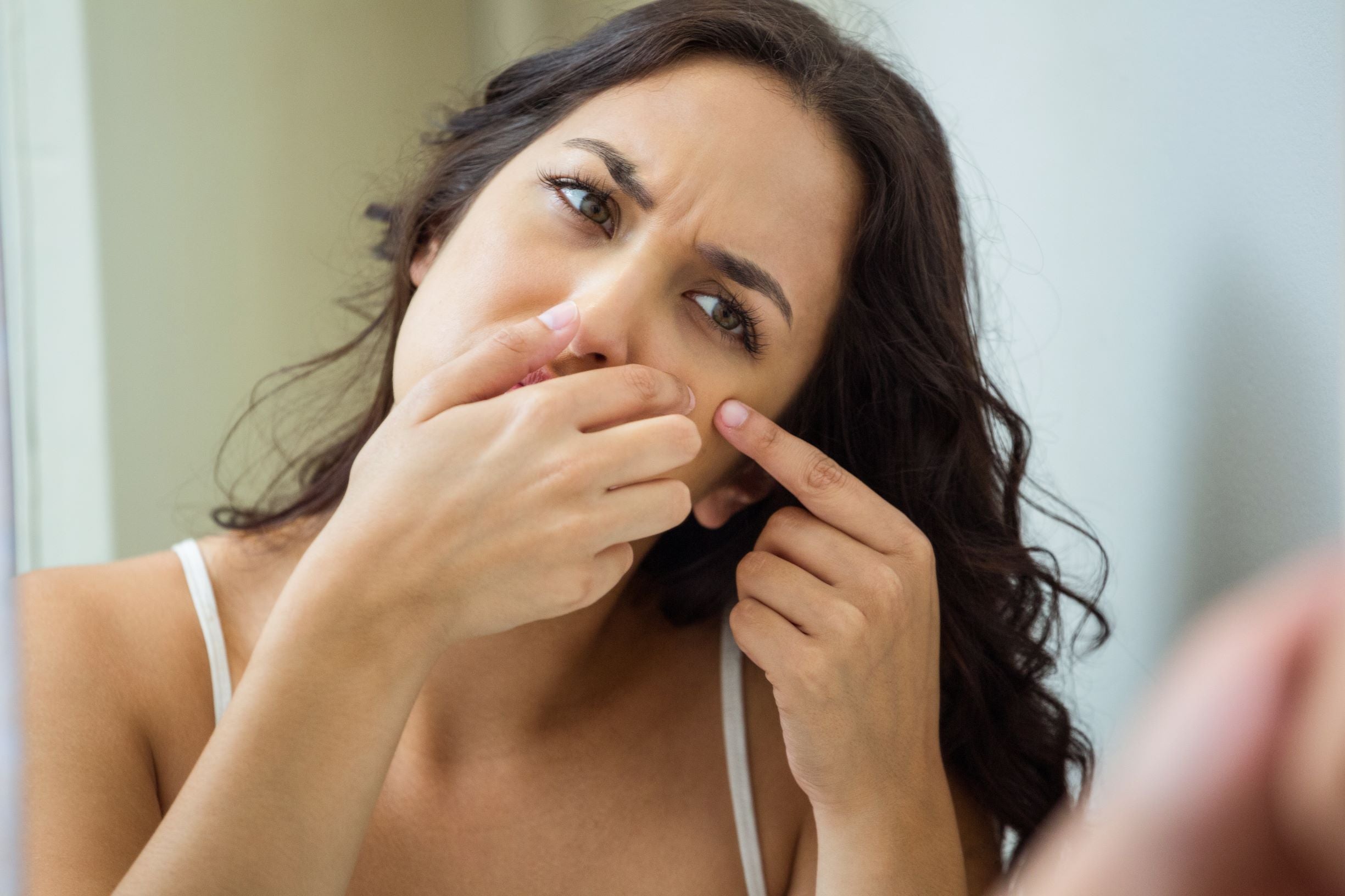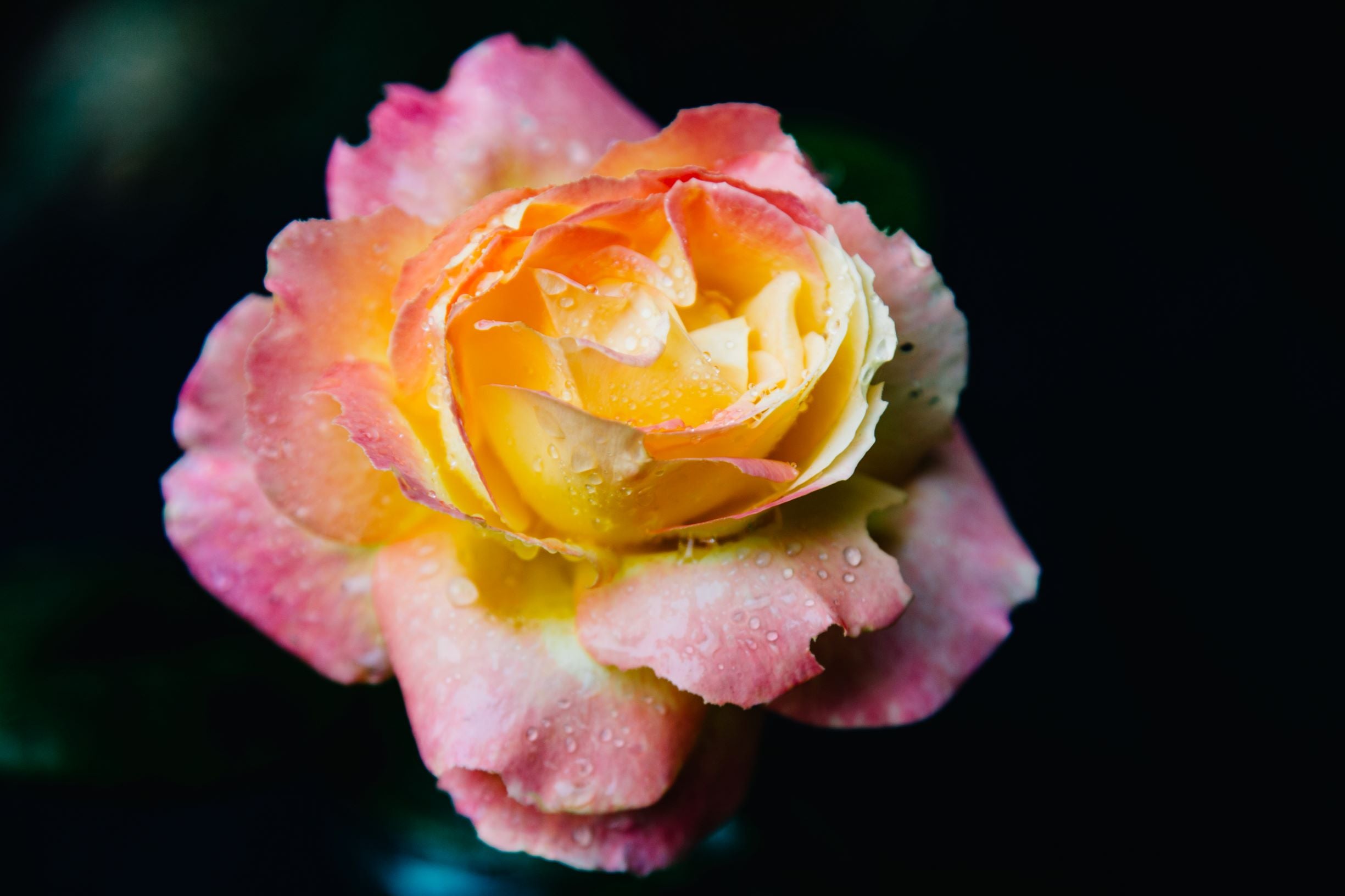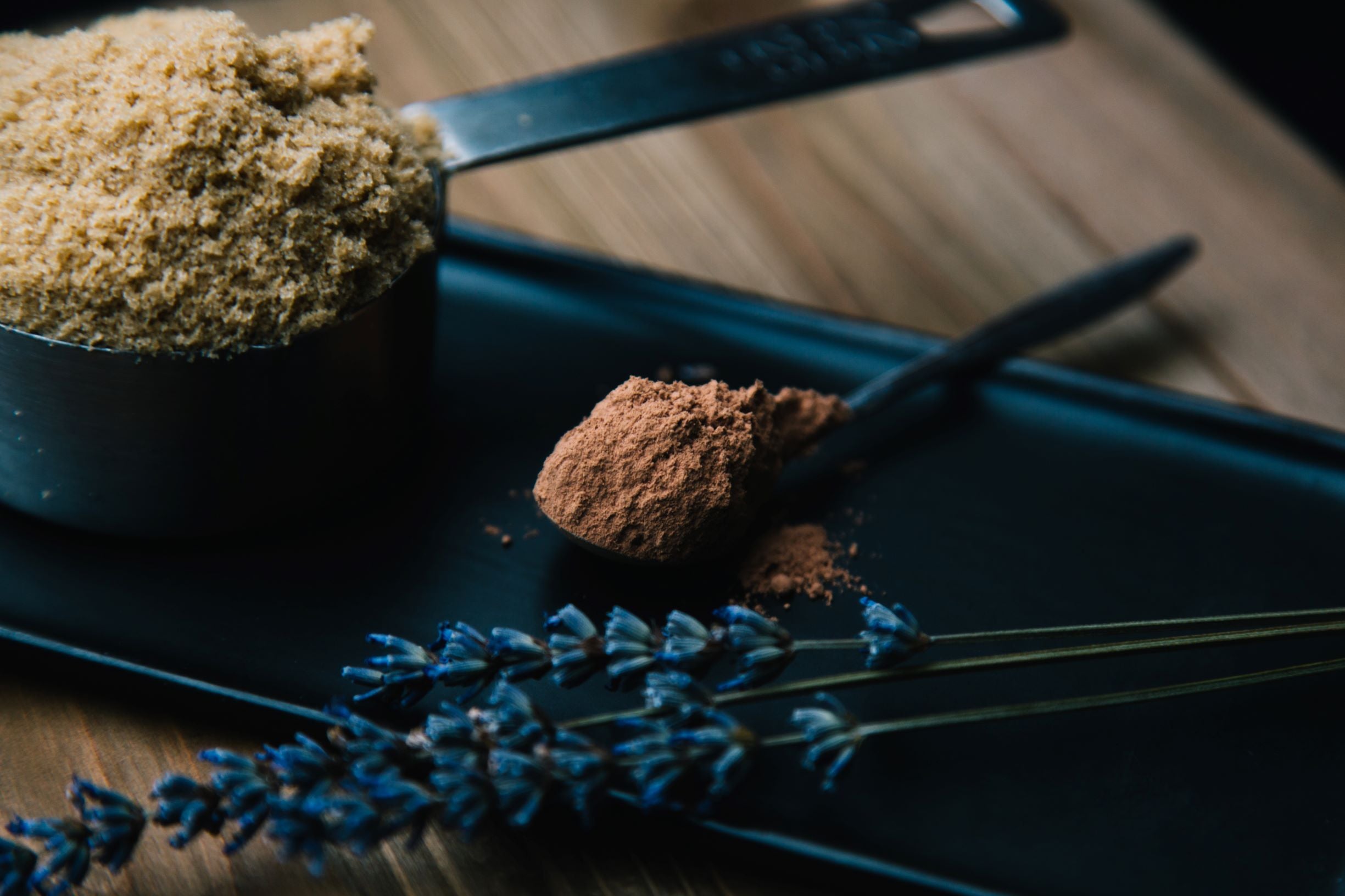
How often should you exfoliate your face?
If you’re wondering how often should you exfoliate your face, you’re absolutely not alone. This is a highly common question. While we know to moisturize each day and brush our teeth both morning and night, there isn’t as a hard line of a rule for exfoliating.
Wanting clear, glowing skin that makes you smile upon passing a mirror, you’re happy to exfoliate as needed but don’t know how many times is too much or too little. That’s why, in this blog, we’re going to go into:
- How much you should actually exfoliate your skin (it’s quite surprising)
- The #1 lies the beauty industry has shared around exfoliating products
- Natural scrubs you can make at home with common kitchen ingredients - that also smell fantastic
Okay, let’s get you on the road to feeling confident about the frequency of exfoliating and (very importantly) the types of exfoliants to avoid at all costs if you want better skin.
So, how often should you exfoliate?
The #1 mistake most people make in skincare is over-exfoliation.

It’s most likely you’ll want to reduce the amount of times you exfoliate because it is likely contributing to skin challenges you don’t want.
While exfoliating less often may seem counterintuitive to achieving glowing skin, here’s why.
Each time we scrub off dry skin or exfoliate in an attempt to reduce oily appearance, our skin ends up being overly treated with harsh stripping of the skin’s natural oils and needs. The natural oils of the skin helps to heal it, keep the skin nourished and even heal itself. Whether trying to scrub to get rid of acne scars, eczema or other skin challenges, know there are downsides to too much scrubbing.
What happens if you exfoliate too much?
If you exfoliate too often, even a few times a week, this can lead to your skin becoming irritated. Irritated skin is likely to not only dry out and create even more patches but lead to other symptoms and skin issues as well. In short, over-exfoliating often leads to skin becoming worse, explains Joshua Zeichner, Director of cosmetic and clinical research in dermatology at Mount Sinai Hospital in New York City. [source]
Why exfoliating isn’t the helpful, healing beauty routine we think
The #1 issue is that most exfoliators in the market are highly abrasive.
Common exfoliating products are quick to aggravate inflammatory acne, or even make it worse over time. While lathering the product on may feel nice at that moment, or even help for a few days, the long-term damage is real.
For rosacea or skin prone to skin flare ups, here’s what to know
Individuals with rosacea should also be careful with exfoliation because too much exfoliating can easily increase facial redness. Why? Aggressive exfoliation may result in postinflammatory hyperpigmentation (PIH), or the appearance of dark spots on the skin in a few people. For those prone to hyperpigmentation (for instance, if you tend to be left with dark marks and spots after a break out or bug bite), it’s actually best to avoid “mechanical” exfoliation as much as you can.
Additionally, know that exfoliation can worsen other skin conditions like herpes simplex, molluscum contagiosum and warts, because these conditions include raised, fluid-filled bumps that could open and become infected.
[source]

The beads that make skin “feel nice and tingly”
When you squeeze the tube of your exfoliating product, a cream comes out that has those tiny beads. As your hands work the products onto your cheeks, jawline and forehead, it feels like each of these tiny balls is scrubbing into the pores and making the skin squeaky clean - like tiny loofahs used in the shower.
Here is the problem.
Most microbeads in exfoliators are tiny balls made of plastic, designed to physically buff the skin to remove dead skin cells, without much focus on consequences for what they’ll do later.
Being made of unnatural plastic, here are a few repercussions of most microbeads.
The harsh chemicals that are harming your skin - when promising to help it
There are millions of products in the beauty industry, made for exfoliation. However, these products contain startling ingredients that aren’t even allowed in other countries.
Most exfoliators you find at the average drugstore or beauty counter appear lovely and promise such help to your skin, but they do more harm than good, hurting your skin.
It’s common that exfoliators, maybe even what’s in your bathroom cabinet right now, contain:
- Plastics
- Irritating fragrances
- Glycerin
- Parabens
- Phthalates and other questionable ingredients
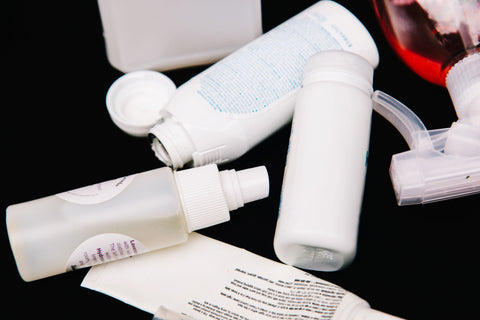
These commercial products can do a lot of damage to the delicate facial skin [source]
Microbeads harm the environment, especially sea creatures
Since microbeads are made of plastic, these tiny make-skin-smooth balls don’t break down easily. After scrubbing the product onto your skin and it shooting down the drain, these tiny pieces of plastic eventually make their way into the ocean. Microbeads are harmful to sea life, especially because they can be ingested and cause health problems for sea creatures.
Studies have found that a single tube of product that contains microbeads can wash anywhere from approximately five thousand, to one-hundred thousand microbeads into the eco-system.
[source]
Many countries have banned microbeads, which are in MOST US exfoliators
Did you know that scrubs containing microbeads were widely banned due to their detrimental impact on the environment? [source]
Denmark & the United Nations took action to educate consumers on the harms of microbeads, and the American Food and Drug Authority followed suit, classifying plastic microbeads as a toxic ingredient and prohibiting its use in cosmetics and beauty products. Canada also lists microbeads as a toxic substance. [source]
How to know if overdoing exfoliation
Here are a few key ways to determine if current exfoliating products or frequency is too much for your gorgeous skin:
-
Redness and irritation
If you see that pinky color creep up or skin start to feel irritated, especially to the touch, this is the first sign of a problem -
Increased dryness and flakiness
If scrubbing and you still have flaky, dry skin, the exfoliator may be the culprit of the dry problem you wanted to correct. Instead of continuing to exfoliate and feel the need for moisturizer throughout the day, hold off on exfoliating and moisturize more both morning and night. (Make sure you use a vegan moisturizer with natural ingredients.) -
Too much oil production
When scrubbed too much, the skin is triggered to produce more oil in an effort to add moisture to now parched skin. This is especially likely if you have oily or combination-skin. -
That (not fun) shiny look
You know the difference. The moment you look in the mirror is shiny - rather than glowing. When the skin appears shiny, that likely means your skin was stripped of its natural texture and now has a look that you don’t desire for photos. The ‘dewy’ glow you desire should be seen AFTER the application of a moisturizer, not immediately following exfoliation. [source]
How to exfoliate naturally & GENTLY
While we’ve shared a lot of the downsides of over-exfoliating and using common drugstore products, know this →
There are healthy ways to keep exfoliating in your beauty routine - to create healthy, gorgeous skin. , with the best outcome for your skin.
What is most important is to have natural ingredients that your skin will know how to process, instead of fake chemicals that ravage your skin like a mall on Black Friday.
Here are a few specific benefits of treating your face with natural exfoliants.
Natural exfoliants can help with anti-aging
To help protect your skin from the unpleasant signs of exposure to the sun, make sure that you use anti-aging skin ingredients from natural skincare products. A study published in the Journal of Drugs and Dermatology revealed that many natural ingredients contain high antioxidant properties that can aid and prevent photoaging.
When used sparingly, natural scrubs can be anti-inflammatory
If your skin is prone to inflammatory skin conditions such as acne, eczema, and psoriasis, when skin is at height of dryness and irritation, seeing flaky patches or bumps can be incredibly frustrating. Very gentle scrub at the most irritated, flaky times can help sweep away old epidermis. By releasing with natural ingredients, your skin will say thank you.
(In fact, several clinical studies show that natural ingredients are effective in the treatment of inflammatory skin issues.)
The benefits of antimicrobial and antibacterial extracts
Some species of bacteria can invade your skin and cause serious infections. To keep this from happening, it is best to use all natural skin care products containing antimicrobial & antibacterial benefits.
Natural skincare elements known to contain strong antimicrobial benefits include chamomile, almond oil, tea tree oil, many essential oils, and honey. Probiotics such as lactobactillus and fermented extracts can also support the good bacteria that maintain healthy skin. [source] This is one reason we suggest natural scrubs that have some of these elements, such as honey or essential oils.
(These types of ingredients are also vital in your moisturizer, which sits on your face all day. To nourish & re-hydrate your skin again while encouraging healing, use a gentle, vegan moisturizer containing natural ingredients.)
Our favorite natural scrub recipes
Let’s get to the specific easy-to-make options. Here are a few “recipes” you can whip up at home, likely with ingredients already at the ready in your pantry.
Simple Sugar Face Scrub
- 1 tsp organic cane sugar (or granulated sugar)
- 2 drops of water
- 1 – 2 drops orange, lemon, lavender or tea tree essential oil (optional)
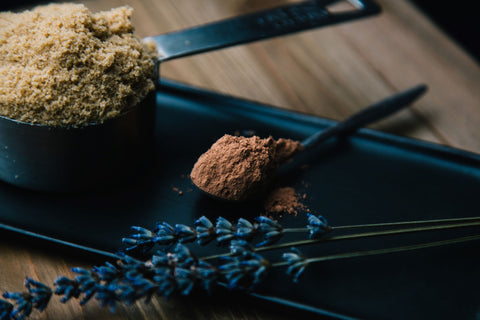
Chocolate Sugar Face Scrub
- 1/4 cup brown sugar
- 1/8 cup olive oil
- 1 tbsp cocoa powder
- 1/4 tsp vanilla extract
Blueberry and Honey Scrub
- 1/2 cup fresh blueberries
- 2 tbsp honey (raw and local is best)
- 1 – 2 tbsp sugar
Lemon and Sugar Face Scrub
- 1 tbsp olive oil
- 1 tbsp organic honey
- juice from 1/2 lemon
- 1/2 cup granulated sugar
So, official answer - How much should you exfoliate?
If you go with a natural exfoliant, using it up to once a week is okay for most skin types!
Remember that moisturizing gets the “exfoliating” results
Even if you’ve exfoliated for years or been told that it’s the best way to get a glow since you were a pre-teen, know that natural moisturizing is what truly heals skin, keeps oil at bay and reduces dry skin.
That’s why the best option (ironically) instead of constant scrubbing is to have a morning and nightly natural moisturizer.
